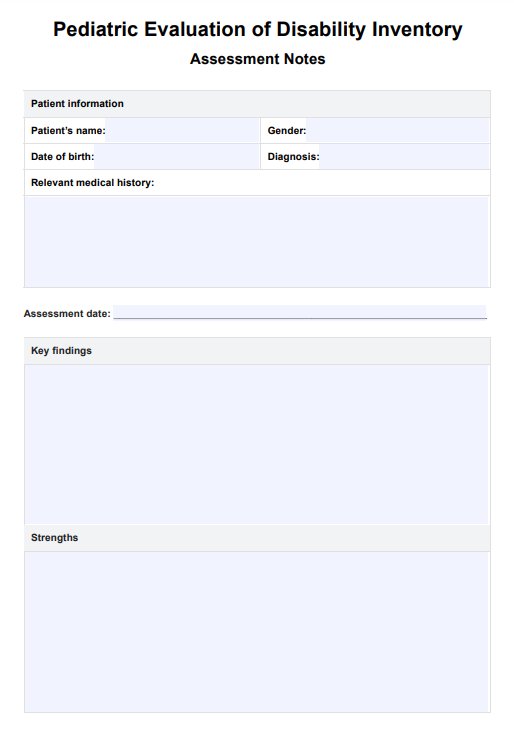The Pediatric Evaluation of Disability Inventory (PEDI) is a tool used to assess children's key functional capabilities and performance.

Pediatric Evaluation Of Disability Inventory
Download the PEDI assessment notes template to document key findings, strengths, challenges, and clinician impressions for effective pediatric assessment and care.
Use Template
Pediatric Evaluation Of Disability Inventory Template
Commonly asked questions
The PEDI measures daily functional abilities in self-care, mobility, and social function domains. The Gross Motor Function Measure (GMFM) evaluates changes in gross motor skills, primarily for children with cerebral palsy.
The completion time for the PEDI typically ranges from 45 to 60 minutes, though this may vary depending on the child's specific needs.
EHR and practice management software
Get started for free
*No credit card required
Free
$0/usd
Unlimited clients
Telehealth
1GB of storage
Client portal text
Automated billing and online payments











